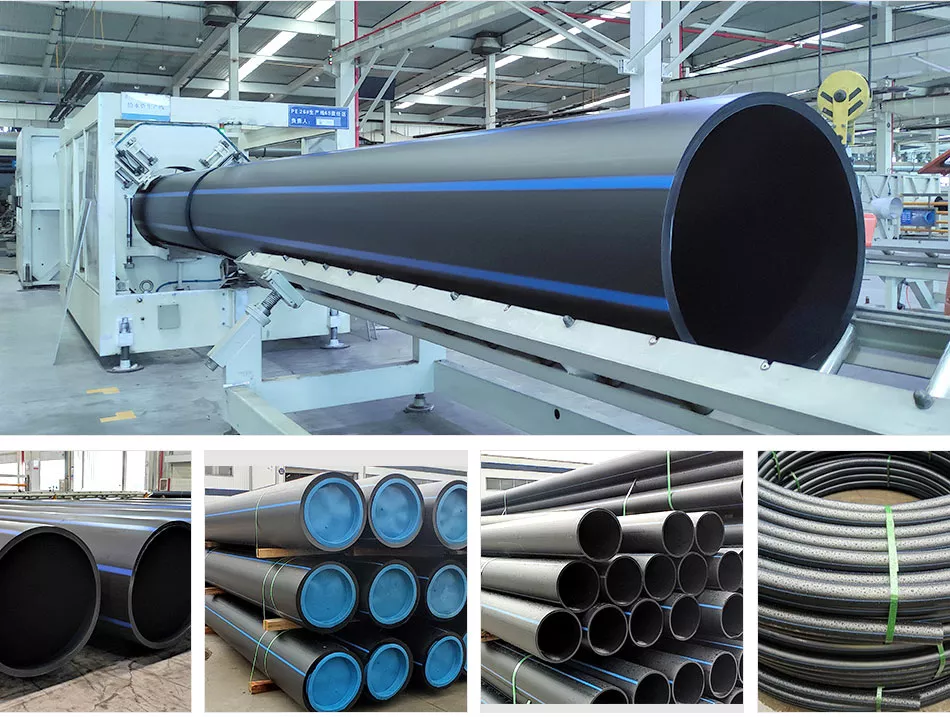American Plastics HDPE Pipe for Oilfield: Trusted by Engineers
Recognizing the Key Perks of HDPE Pipeline for Water and Wastewater Administration
The use of HDPE pipe in water and wastewater monitoring offers countless advantages that merit factor to consider. Its outstanding durability and lengthy life expectancy make it a preferred choice for lots of jobs. In addition, the material's resistance to rust and chemical damages enhances its integrity in different environments. The advantages prolong beyond simply long life and resistance. Pipe Manufacturing Midland TX. Discovering its cost-effectiveness and ecological effect discloses a lot more compelling reasons for its prevalent fostering in modern-day infrastructure
Exceptional Toughness and Longevity

HDPE pipe stands out for its extraordinary resilience and long life, making it a favored option in water monitoring systems. Created from high-density polyethylene, these pipes can endure considerable stress and stress and anxiety, making sure reputable performance over time. Their durable nature allows them to withstand extreme ecological conditions, consisting of temperature level fluctuations and soil activities, which can trigger other materials to stop working.
The life-span of HDPE pipes commonly exceeds 50 years, giving an affordable service for municipalities and industries alike. Additionally, the material's light-weight residential or commercial properties streamline installation, reducing labor costs and timeframes. This longevity minimizes the need for regular repairs or replacements, even more boosting its economic charm.
In water monitoring applications, the reliability of HDPE pipes suggests less interruptions and enhanced solution continuity, making them integral to lasting infrastructure growth. The mix of toughness and durability strengthens HDPE's function as a foundation in effective water administration services.

Resistance to Rust and Chemical Damage
While many materials succumb to rust and chemical damages in time, HDPE pipelines exhibit remarkable resistance, making them perfect for different water management applications. This resilience originates from the molecular structure of high-density polyethylene, which is naturally non-reactive and does not wear away like metals or break down from exposure to rough chemicals. Because of this, HDPE is highly efficient in settings with aggressive compounds, such as wastewater systems that might consist of acids, bases, and organic solvents.
Additionally, HDPE pipelines can endure environmental variables such as soil level of acidity and saline conditions, better improving their suitability for diverse applications (hdpe pipe fittings Midland TX). Their capability to maintain architectural integrity over time decreases the danger of leaks and failures, which is crucial in making sure the safety and reliability of water distribution and wastewater management systems. The resistance to corrosion and chemical damage markedly contributes to the overall effectiveness and durability of HDPE piping solutions.
Cost-Effectiveness and Financial Benefits
When taking into consideration the economic effects of water monitoring systems, the cost-effectiveness of HDPE pipelines becomes evident. These pipelines use lower installment and upkeep expenses contrasted to typical materials like steel or concrete. Their light-weight nature simplifies transportation and setup, leading to reduced labor expenditures. In addition, HDPE pipelines display a long life-span, frequently exceeding half a century, which equates to fewer substitutes and long-term savings.
The resistance of HDPE look at this web-site to rust and chemical damages lessens the need for pricey repair services and substitutes. The pipelines likewise support efficient water circulation, minimizing energy costs associated with pumping systems. By mitigating leaks and water loss, HDPE pipes add to significant financial advantages for communities and industries alike. Overall, the initial financial investment in HDPE piping can yield significant monetary returns over the life-span of the water administration system, making it a sensible choice for sustainable framework advancement.
Ecological Sustainability and Decreased Influence

Versatility and Adaptability in Installment
Due to their special residential or commercial properties, HDPE pipes offer impressive convenience and adaptability in setup, making them appropriate for a broad array of applications. Their light-weight nature enables for simpler handling and transportation, minimizing labor expenses and setup time. HDPE pipelines can be bent and formed to fit various surfaces and job needs, which is particularly valuable in challenging settings.
Furthermore, their resistance to corrosion and chemical damage allows for installment in varied settings without the demand for specialized protective coatings. The capability to fuse joints creates a continual, leak-free system, boosting the overall stability and dependability of the installment. HDPE's flexibility likewise suits ground movement, reducing the danger of damages in locations vulnerable to moving dirt. In general, these attributes make HDPE pipes not only functional yet likewise a preferred choice for water and wastewater monitoring systems.
Often Asked Questions
Just How Does HDPE Pipe Compare to PVC in Water Monitoring Applications?
HDPE plumbing camera pipe offers premium versatility, resistance to corrosion, and resilience contrasted to PVC. Its lighter weight facilitates simpler installment, while its long life expectancy reduces replacement prices, making HDPE a recommended option in water management applications.
What Is the Lifespan of HDPE Water Lines Under Common Problems?
Under regular conditions, HDPE pipes can have a life expectancy varying from 50 to 100 years. Their durability and resistance to corrosion contribute to their lasting efficiency in numerous applications, making them a dependable option for facilities.
Are HDPE Pipeline Recyclable After Their Life Span?
Yes, HDPE pipes are recyclable after their solution life. Pipe Manufacturing Midland TX. They can be refined and repurposed into new products, significantly minimizing environmental influence and advertising sustainability within the sector, making them an eco-friendly choice for piping solutions
What Is the Installation Process for HDPE Water Lines?
The installment procedure for HDPE pipes involves website prep work, trenching, pipeline blend or mechanical joining, backfilling, and pressure testing. Appropriate strategies guarantee a long lasting and reliable system for moving water and wastewater properly.
Can HDPE Water Lines Be Used for Both Drinkable and Non-Potable Water Solutions?
Yes, HDPE pipelines can be used for both drinkable and non-potable water supply. Their adaptability, toughness, and resistance to deterioration make them ideal for various applications, browse this site making sure safe and reliable transport of water in various contexts.